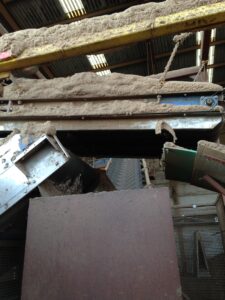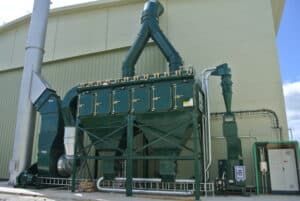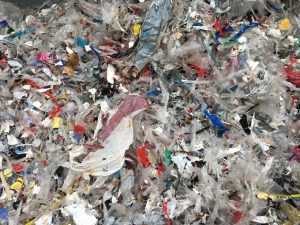The problems with dust
However you look at it, dust is a nuisance. At its worst, dust has the potential to be explosive, often with devastating effects. The process of controlling dust within a waste facility should be a priority in order to protect employees, your facility and the environment. According to the Chief Fire Officers Association (CFOA), UK fire and rescue services attend around 300 significant fires in waste sites every year causing millions of pounds worth of damage. The CFOA subsequently provide advice to waste operators to minimise the risk of fire with measures such as dust suppression and dust control systems.
Dust can also have a detrimental effect on equipment due to its abrasive qualities, resulting in downtime, repairs and replacement of parts. A well-designed dust control system will remove the majority of dust at its source, reducing maintenance requirements and unplanned downtime.
Unmanaged dust can also lead to a reduction in the quality of your material or product resulting in higher reject rates and a reduction in profits.
Dust can be detrimental to health. Long term exposure to airborne dust can cause respiratory diseases such as asthma and chronic obstructive pulmonary disease (COPD) and even cancer. The HSE report that 12,000 employee deaths are caused by lung disease due to past exposures at work.

What the law says
As a business, you have a legal obligation to comply with the Environmental Protection Act 1990, this Act ensures that the emissions you discharge to atmosphere are within acceptable limits.
Installation engineers should be qualified to BOHS P601 and P602 and work strictly to HSG258, COSHH 2002 Regulations and Workplace Exposure Limits EH40 (UK Regulations). Your dust control systems should also be designed in compliance with ATEX 2014/34/EU.
Controlling dust at its source
Sorting, tipping, crushing, screening, separating, pelletising and general handling of waste are all ways in which nuisance dust is generated and disturbed within a waste site. Poor housekeeping allows dust to settle and pile up over time, resulting in a potential explosive environment. Vibrations from conveyors and other machinery allow dust to fall and again settle in unwanted places around the waste site.
The Waste Industry Safety and Health Forum (WISH) state that “dust control is often underestimated” as it calculated that a 1mm layer of general dust, if disturbed into the air to a height of 5m, can generate a dust cloud sufficient to result in a fire or explosion hazard on its own.
Control measures such as a central dust control system with dust capture hoods on tipping bays, conveyor junctions and shredders, for example, will remove dust from its source. The type and quantity of dust must always be taken into consideration, along with the position of the equipment when designing a dust management system, the correct mitigation measures should always be considered and included in the design.
As part of the dust control plan, bespoke spark detection systems can be used to detect sparks, glowing embers and hot particles that could become the ignition source for a fire or explosion if allowed to travel on through pneumatic ductwork and conveyors towards other material handling equipment.
With so many risks created by nuisance dust all plant owners are wise to ensure they have a robust dust control system in place.

Visit our Dust Control Solutions page for more information or contact us for assistance.
